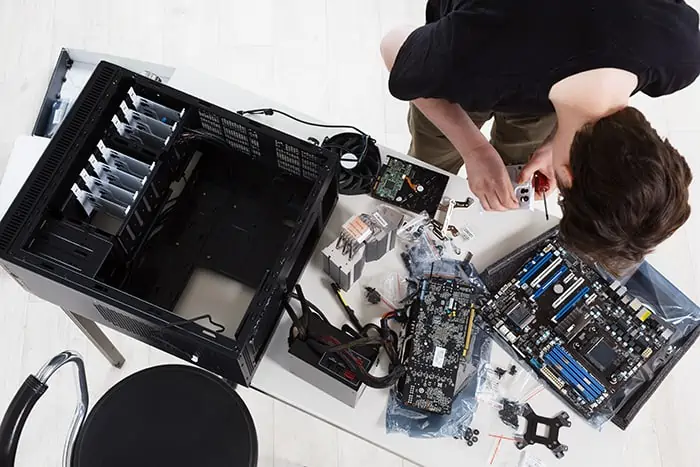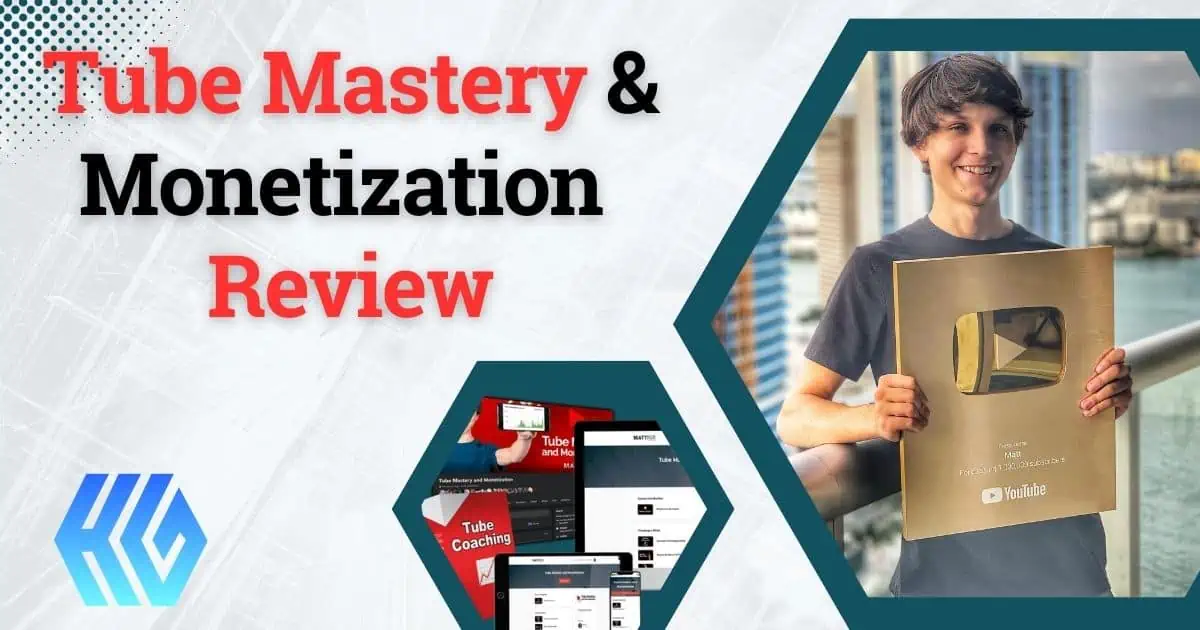How to Soundproof A Gaming Room: Comprehensive Guide

Hypergraze may earn a commission from purchases made through our links, at no extra cost to you. We only recommend products we trust. For more information, visit my disclaimer page.
If you’re a serious gamer, you understand the importance of creating an immersive gaming experience. But nothing derails that experience faster than outside noise. Whether it’s the sound of traffic outside or the kids playing in the next room. This is where soundproofing your gaming room becomes necessary.
Imagine a gaming room where the only sounds you hear are those from your game, where the outside world can’t disturb your immersive experience. No honking cars, no barking dogs, no loud conversations, just you and your game.
In this comprehensive guide, we’ll show you how to soundproof a gaming room so that you can game in peace. Are you ready to transform your gaming space into a soundproof sanctuary? Let’s dive into the world of soundproofing.
Sealing Sound-Leaking Windows
Have you ever noticed how much noise can sneak in through the windows? It’s something we often overlook, but windows can be a primary culprit when it comes to unwanted sound leakage. Now, you may be thinking, “But I like my windows, they let in the sunlight and offer a great view!” Don’t worry, I’m not about to suggest you brick up your windows.
Importance of addressing sound leakage through windows
The reason for tackling sound leakage through windows is twofold. First, it’s about improving your gaming experience. By reducing external noises, you can enhance your focus and fully immerse yourself in the gaming world. Second, it’s about respect for others. By preventing the sound from your gaming sessions from escaping through windows, you reduce the chance of disturbing your neighbors or others in your household.
Techniques for sealing windows to prevent sound transmission
There are several techniques you can use to seal your windows and prevent sound transmission.
One of the easiest and most cost-effective solutions is weatherstripping. This involves applying a strip of material around your window frames to seal any gaps. It’s a simple DIY job that can make a significant difference in reducing sound leakage.
Acoustic caulking is another option. This material is specifically designed to block sound transmission and can be used to fill gaps and cracks around your window frames.
If you’re looking for a more substantial solution, consider installing soundproof window inserts. These are additional panes of glass that you can fit inside your existing windows. They create an air gap which can dramatically reduce the amount of sound that gets through.
Each of these techniques has its benefits and drawbacks, so it’s about choosing the one that fits your needs and budget best. Remember, the goal is to create a gaming room where the only sounds you hear are the ones you want.
Soundproofing the Door
Your gaming room door is the first and most significant point of entry for sound, and it’s where most of the noise escapes from. Doors, especially if they’re hollow core, can let a surprising amount of sound in and out of your gaming room. Soundproofing your door is a crucial step towards achieving a quiet gaming room.
Adding Soundproofing Materials to Your Game Room Doors
Several materials can help to dampen sound transmission through your door. Here are some of the most effective solutions:
Soundproofing Door Seals: These work in a similar way to weatherstripping for windows. You can install them around the door frame to cover any gaps and prevent sound from slipping through. These seals are particularly effective for blocking medium to high-frequency sounds, such as people talking or the TV playing in another room.
Door Sweep: This is a strip of material that attaches to the bottom of your door. It covers the gap between the door and the floor where sound can easily pass through. Door sweeps are available in a variety of materials, but for soundproofing purposes, you’ll want to look for one that specifies it’s designed for noise reduction.
Soundproofing Blankets: If your door is particularly thin or you want an additional layer of soundproofing, consider hanging a soundproofing blanket over it. These heavy, dense blankets are designed to absorb sound and reduce echo. They can be particularly effective for dampening low-frequency sounds, which are harder to block.
Solid Core Doors: If you’re in the position to make a more significant change, you could consider replacing your hollow core door with a solid core one. These doors are denser and more effective at blocking sound. However, this is a more expensive solution and may require professional installation.
Each of these materials and solutions can help to reduce the amount of sound entering and leaving your gaming room through the door.
Soundproofing Walls
Soundproofing your walls is one of the most effective ways to create a quiet gaming environment. Walls are, after all, your first line of defense against external noise.
Naked walls, just like floors and ceilings, tend to bounce sound waves back and forth if there is no sound-absorbing furnishing on them. Here are a few techniques to help you achieve this.
Exploring different methods for soundproofing walls
There are several ways to soundproof your walls, each varying in cost and effectiveness. This is primarily for the inside of the walls. Other methods for the outside wall will be discussed later.
Mass-loaded Vinyl (MLV): This is a dense material that’s effective at blocking sound. You can add it to your existing walls for an added layer of soundproofing. It’s thin enough to be covered with drywall or another wall finish
Resilient Channels: These are metal strips that create a separation between your wall and the drywall, reducing the amount of sound that can pass through. They’re a bit more involved to install but can be very effective.
Green Glue: This is a damping compound that converts sound energy into heat, reducing sound transmission. It’s typically used between two layers of drywall for maximum effectiveness. Remember to effectively keep your gaming room cool.
Enhancing Soundproofing with Pillows
Pillows are one of the most versatile and effective ways to enhance the soundproofing of your gaming room. They might seem like an afterthought, but with a little ingenuity and creativity, they can provide significant improvements in noise reduction and sound quality. Pillows can absorb some sound, reducing echo and making your gaming room quieter.
One way to use pillows for soundproofing is to place them around the room’s perimeter.
This technique works particularly well if you have hard surfaces such as walls or floors that tend to reflect sound waves.
By strategically placing pillows along these surfaces, you can absorb some of the sound waves before they bounce back into your room.
Utilizing Sound-Absorbing Blankets
Sound-absorbing blankets, similar to the ones that can be used on doors, can be hung on walls to absorb sound.
Sound-absorbing blankets work by trapping the sound waves within their fibers, preventing them from bouncing back into the room. This results in a quieter gaming experience that is both enjoyable and relaxing.
However, not all sound-absorbing blankets are created equal. Be sure to look for ones that have high noise reduction coefficient (NRC) ratings as these will be more effective at reducing noise levels.
One of the best things about sound-absorbing blankets is that they are versatile and can be used in various ways throughout your gaming room. You can hang them on your walls or use them as curtains to block out unwanted noise from outside your gaming room.
You can also place them under or behind furniture where sounds tend to bounce around more predictably than in open areas in your gaming room.
Hanging these blankets on your walls can be an effective and relatively easy way to enhance the soundproofing of your gaming room.
Enhancing Soundproofing with Acoustic Foam
Acoustic foam is undoubtedly one of the most popular soundproofing materials used in gaming rooms today. It works by absorbing sound, reducing echo, and improving the acoustics in your gaming room. The foam is available in various shapes and sizes, including panels, tiles, and even pyramid and wedge shapes for added visual interest.
However, not all acoustic foams are created equal, and you need to be careful when choosing which type to buy. In my opinion, the best option for a gaming room is wedge-shaped acoustic foam.
These foam wedges are specifically designed to redirect sound waves away from your ears and towards areas where they can be absorbed more effectively. They’re also incredibly easy to install. Simply peel off the adhesive backing and stick them onto walls, ceilings or any other surface where noise might bounce around.
Another great thing about acoustic foam is that it comes in many different colors and designs. So not only will it help reduce noise levels in your gaming room, but it can also add an extra touch of personality and style to your setup.
To get the best results possible, you should also consider using other materials like sound-absorbing blankets or carpets for maximum impact. With a combination of these techniques applied properly, you’ll be able to create a truly immersive gaming experience without having to worry about disturbing others outside your gaming room!
Soundproofing the Floor and Ceiling
When soundproofing a gaming room, it’s crucial not to overlook the floor and ceiling. Sound can easily penetrate through these surfaces and disrupt your gaming experience. From footsteps above to creaking floorboards below, these noises can be just as invasive as those coming through walls and windows. So, how do you tackle this issue?
Adding Carpets for Sound Absorption
One of the simplest and most cost-effective solutions is to add carpets to your gaming room. Carpets, especially those with good quality underlay, are excellent for absorbing sound. They can help to dampen both airborne sounds, such as people talking, and impact sounds, like footsteps or the movement of furniture.
A thick, plush carpet will provide the best sound absorption, as it has more material to capture and dampen sound waves. If a wall-to-wall carpet isn’t an option, consider adding large area rugs. These can be particularly effective if placed strategically – for instance, under your gaming chair or desk. The more coverage you can get, the better the sound absorption will be.
In addition to providing sound absorption, carpets also have the added benefits of making your gaming room more comfortable and enhancing the overall aesthetic. A well-chosen carpet or rug can contribute to a cozy and inviting gaming environment.
But what about the ceiling? If you live in an apartment or if there’s another room above your gaming room, soundproofing the ceiling can also be important. Soundproofing materials for ceilings can range from specialized acoustic ceiling tiles to a layer of drywall with a damping compound like Green Glue.
Remember, effective soundproofing involves considering all potential sources of noise, and that includes the floor and ceiling. By taking steps to soundproof these surfaces, you can further enhance the quiet and immersive gaming environment you’re striving for.
Soundproofing Your Gaming Equipment
If you’re a gamer, then you know that your gaming equipment can be the noisiest part of your setup. From the sound of your mouse clicking to loud fans in your PC, these noises can be very distracting and frustrating. That’s why it’s important to soundproof your gaming equipment to create an immersive environment without any distractions.
Decreasing the Sound of Your Gaming System
One way to achieve this is by using acoustic foam on the sides of your PC case or on the walls near your gaming equipment. Acoustic foam is affordable and easy to install; just cut it in the right size and shape for easy application.
The material absorbs sound rather than reflecting it, so it lowers the amount of noise that bounces off surfaces. Another option is to purchase a sound-absorbing mat under your keyboard or mouse pad.
These mats prevent vibrations from being transferred through surfaces which results in less noise. They come in different sizes and shapes, so you can find one that fits perfectly on your desk.
Consider upgrading the fan in your gaming PC with a quieter solution. Loud fans are probably one of the most annoying aspects of playing video games, but thanks to new technologies there are options out there specifically designed for gamers who want their rigs as silent as possible.
A quality silencer will drastically reduce fan noise while maintaining optimal cooling performance. Adding some simple touches like acoustic foam or a sound-absorbing mat will make a significant difference when it comes to keeping noise levels down from gaming equipment within any room setup today!
How to Soundproof A Gaming Room on a Budget
When it comes to soundproofing your gaming room, the cost can quickly add up. There are ways to achieve a more peaceful and quieter gaming experience without breaking the bank.
In this section, we will explore some budget-friendly options that will help you soundproof your gaming room.
Rearranging Your Video Game Room
One of the most cost-effective methods of soundproofing your gaming room is rearranging your furniture.
The placement of your desk and speakers can have a significant impact on how much noise travels through the walls and doors. Positioning your desk away from shared walls or windows can help reduce outside noise from entering your space.
Additionally, if you use speakers while gaming, consider placing them on stands or shelves instead of directly on your desk to prevent vibrations that can carry through floors and walls.
If your gaming room has windows that let in a lot of noise, try positioning your setup away from these areas. If possible, place your gaming equipment in the part of the room that’s furthest from noise sources like windows or doors.
Maintaining a Clean Gamer Setup
Keeping your gaming room clean and clutter-free can also contribute to better acoustics. A room that’s full of clutter can cause sound to bounce around in unpredictable ways, creating an echoey or distorted sound environment.
Having too many items in your gaming room can contribute to unwanted noises bouncing off surfaces and making their way through walls.
By keeping things tidy and minimalistic, you can decrease noise levels without spending any money at all. Just because you’re on a budget doesn’t mean you have to sacrifice having a quiet gaming environment.
Check out our article on choosing the best color for your gaming room
Conclusion
So, there you have it, a comprehensive guide on how to soundproof your gaming room. We hope that with the tips and tricks we have provided, you now have a better understanding of how to keep noise out of your gaming space.
Remember that soundproofing is not just for your benefit, but also for those around you who may be impacted by the noise. It’s important to note that while some methods may seem costly, they are an investment in the longevity of your gaming equipment and in maintaining a peaceful living environment.






